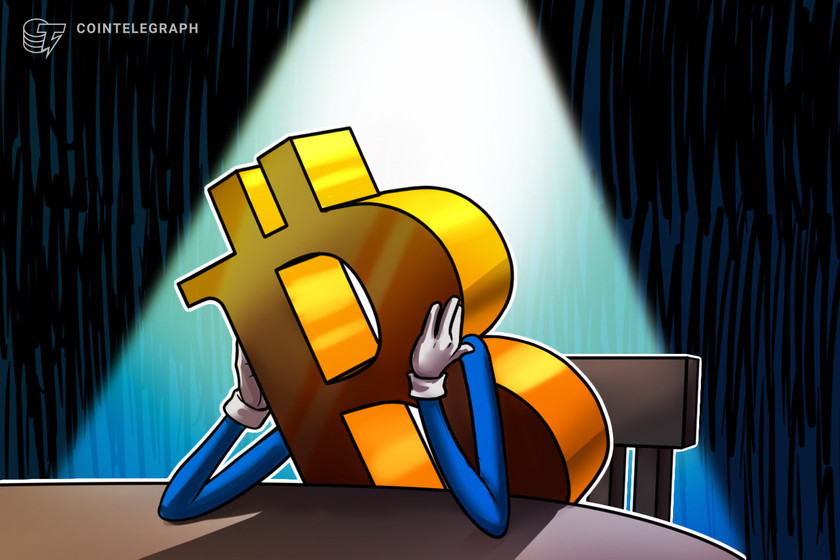
Despite coming up short of his goal, crypto trader Thomas Kralow said the crypto-funded expedition was all about two things: “Bitcoin and happiness.”
A Bitcoin proponent’s recent attempt to crypto trade his way from New York to Alaska has come to a sudden and bitter end — some 900 miles from his final destination.
Thomas Kralow, a crypto trader and educator recently set himself the daring task of traveling from one side of the United States to the other funded solely by trading crypto.
On Aug. 12, Kralow set out from New York with his assistant Ilya and an initial budget of $5,000 cash.
The pair forked out some cash for a dinged-up Mercedes and set up a Starlink antenna on the back of the vehicle — with fast internet being a requirement for quick trades — leaving them with just $2,500 to trade their way to Alaska.
Unfortunately for Kralow, he never made it to his final destination — with his oil-starved vehicle grinding to a permanent halt in Seattle, just 12 days after starting the journey.
Speaking to Cointelegraph, Kralow shared some details of the trip that didn’t make it into the 6-episode YouTube series where he documented the daily happenings of the crypto-fuelled voyage.
Kralow said that despite the trip being riddled with “insanely scary” lightning storms, wildfires, car troubles, theft, and navigating a constantly changing landscape in a foreign country on a razor-thin budget — the biggest challenge of the entire journey was actually the trading itself.
“We had like $2,500 our initial trading deposit and we had approximately $300 per day in expenses, which means everyday we had to earn like 12 to 14%,” he said.
“Anyone who is into the world of finance would think it's just suicide, which it kind of was. I was very open from the start and I just said, ‘listen, if I blow the account, it's just going to be done.’”
Despite the odds being firmly stacked against him, Kralow explained that it didn’t matter all that much that it was a potential suicide mission. While he admitted that some of the motivation behind the journey was growing his social media following, he said that he only wanted viewers to take away two things.
“It’s all about happiness and Bitcoin.”
“In these videos, I just wanted to show how important it is to lead a fulfilled and grateful life, as well as sharing knowledge about the most incredible industry and asset which is Bitcoin and blockchain.”

Kralow, who routinely flaunts his wealth across his various social media channels, described the journey as a “kind of humbling” experience, saying that it helped take him back to his roots and reminded him of growing up in a home that was pretty far from wealthy.
“I just wanted to level with the world basically, go back to where I came from, and really just enjoy it again.”
Notably, Kralow said that the most surprising part of the entire adventure was the level of crypto literacy present in completely unexpected parts of the U.S.
“I met this welder in Louisiana, and we had such a great conversation about the Southern part of the United States and Bitcoin. He was driving a truck and chewing tobacco and spitting on the ground and it really shocked me how well-educated he was on Bitcoin.”
Related: Bitcoin gains legal recognition as digital currency in Shanghai, China
This stood in stark contrast to Kralow’s experience in more tech-savvy parts of the states like Silicon Valley, where he said he expected more knowledge around the concept of Bitcoin and cryptocurrencies.
“And then we meet this other guy who presented as this stereotypically smart, well-dressed person in California, and he knew nothing about crypto or Bitcoin. We were talking about our trip and he just asked us ‘oh, what even is Bitcoin?’”
The next order of business for Kralow after wrapping up the trip was lodging a request with Guiness Book of World Records.
Our #Bitcoin world record application is in pic.twitter.com/5dW2yN0QFf
— Thomas Kralow (@TKralow) September 26, 2023
“A lot of people have driven from wherever to wherever, but I’m pretty sure no one has ever driven more than 5,000 miles while surviving only on earnings from trading Bitcoin or crypto.”
Magazine: How to protect your crypto in a volatile market — Bitcoin OGs and experts weigh in



















